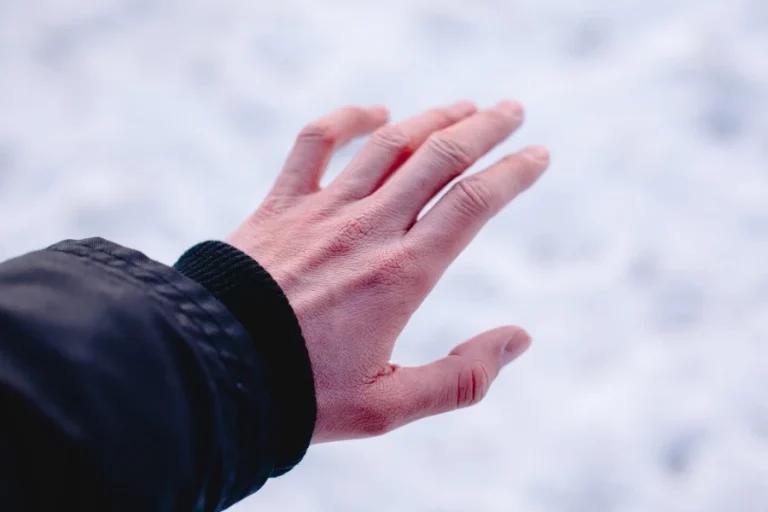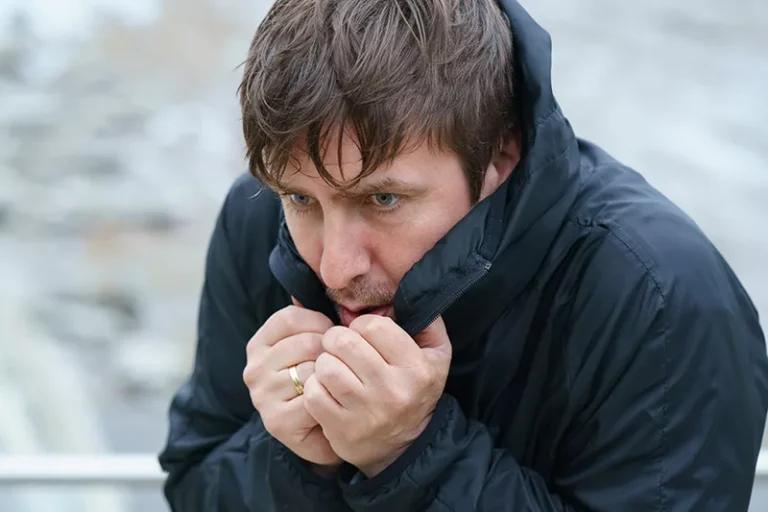Frostbite is damage to the skin caused by extreme cold weather over long periods of time, particularly if there is an added wind-chill below -0.55 degree Celsius (31F). It occurs when the skin, nerves, and blood vessels below the top layer of the skin freeze. Frost bite can occur on any part of the body, but the most commonly affected areas are the hands, fingers, feet, toes, ears, nose, lips, and cheeks.
The lack of blood supply and oxygen to the skin can start to cause further damage to the cells, forming ice crystals and blood clots in the affected tissues. The chance of frostbite increases the longer you are exposed to the cold temperatures. Permanent damage may happen if the affected area is not treated promptly.
The aim of frostbite treatment is to slowly and steadily restore normal body temperature to the affected body parts. Lets take a look at how this is done.
📝 How common is frostbite?
Cases of frostbite are uncommon in the UK, but some people are at greater risk:
- People in freezing conditions without protective clothing
- Having certain medical conditions, such as diabetes, Raynaud disease, poor blood flow or congestive heart failure
- Smokers
- Having had frostbite or another cold injury in the past
- Infants and older people in cold and freezing temperatures. People in these age groups have a harder time producing and retaining body heat
- Being in cold conditions at high altitude
🥶 What are the symptoms of frostbite?
There are three stages of frostbite with various symptoms:
Stage 1: Frostnip
During the frost nip stage you will feel a throbbing or aching in the affected area. The affected body part will have a tingling sensation. Early signs of frostbite also include a change in skin colour to white, with the skin becoming cold and numb.
People who live or work in cold climates are at greater risk of this. The extremities, such as the fingers, nose, ears and toes are most commonly affected. Frostnip doesn’t cause permanent damage to the skin.
Stage 2: Frostbite
As exposure to cold temperatures increases, it can cause more tissue damage. The frostbitten area will feel hard and frozen, affecting the top layers of skin and tissue.
When you’re out of the cold and the tissue has thawed out, the skin appears red with painful fluid filled blisters, including swelling and itching. To prevent permanent damage treatment is needed at this point.
Stage 3: Deep frostbite
This stage is severe frostbite. The injured area of skin at this point is white, blue or blotchy and the tissue underneath feels hard and cold to touch. There may also be further damage beneath the skin, to the tendons, muscles, nerves and bones.
As the skin thaws, blood-filled blisters form and turn into thick black scabs. At this stage, there is dead tissue and urgent medical care is needed.
⚠️ What is first aid treatment for frostbite?
Here are some first aid measures to take if medical assistance isn’t available immediately:
- Reduce exposure to further cold temperatures by moving the person to a warm place
- Remove rings and bracelets from the persons hands
- Remove wet clothing and replace with dry clothing
- Handle the area gently. Do not rub the affected area
- Soak the affected area in warm water gently until it appears red and feels warm. If warm water is not available, use body heat, such as an armpit, to warm fingers
- Loosely bandage the affected body part with dry, sterile dressings
- If the person’s fingers or toes are frostbitten, place dry sterile gauze between them to keep them separated
- Avoid breaking any blisters on the injured area
- Do not allow the affected skin to refreeze
- Don’t allow someone with frostbite to smoke because smoking can affect blood circulation
- Seek professional medical attention and care as soon as possible
❌ What not to do when treating frostbite?
Here are some things that should not be done to treat frostbite:
- Frostbitten areas, once thawed, should be moved as little as possible
- Do not massage or rub the affected area to attempt to rewarm it
- Avoid disturbing any blisters or skin that has developed gangrene
- Do not use direct heat such as hair dryers or heating pads to rewarm the affected area
- If there is potential for refreezing of an area, do not attempt to thaw it, as thawing followed by refreezing can cause even more extensive damage to the area
🏥 Treatment from a medical professional
Treatment from a healthcare professional will involve:
- Rewarming the skin: The healthcare team may rewarm the area if it has not been done, using a warm-water bath for 15 to 30 minutes, encouraging gentle movement
- Pain relief medicine: The rewarming process can be painful and medication such as ibuprofen maybe given
- Protecting injured parts of the body: Once the skin thaws, your healthcare team may loosely wrap the area with sterile sheets, towels or dressings to protect the skin and raise the affected area to reduce swelling
- Antibiotic medication: If the skin or blisters look infected, your doctor may prescribe antibiotic medicine taken by mouth. Other problems that can occur include infection and tetanus. A tetanus shot maybe needed
- Medicine to restore blood flow: People with severe frostbite may be given a thrombolytic drug to lower the risk of amputation, as it can help to restore blood flow
- Removal of damaged tissue: To heal properly, frostbitten skin needs to be free of damaged, dead or infected tissue. This procedure to remove this tissue is called debridement
- Protect blisters and wounds: Depending on the type of blisters, your healthcare team may leave them to heal on their own or drain them. Wounds will be cared for in a range of ways, depending on the extent of injury
- Surgery: People who have experienced severe frostbite may in time need surgery or amputation to remove dead or decaying tissue
📝 Conclusion
Treatment for frostbite includes pain relief and quickly rewarming the frostbitten body parts (if there is no risk of refreezing) to prevent problems such as infection, dead tissue, or even amputation of the frozen body part. Always seek medical attention for frostbite, or you may be left with permanent problems if appropriate treatment isn’t given.
Sources
- Frostbite – NHS
- Frostbite: Signs & Symptoms, Stages, Treatment & Prevention
- Frostbite – Symptoms and causes – Mayo Clinic
- Frostbite – Diagnosis and treatment – Mayo Clinic
Medical Disclaimer
NowPatient has taken all reasonable steps to ensure that all material is factually accurate, complete, and current. However, the knowledge and experience of a qualified healthcare professional should always be sought after instead of using the information on this page. Before taking any drug, you should always speak to your doctor or another qualified healthcare provider.
The information provided here about medications is subject to change and is not meant to include all uses, precautions, warnings, directions, drug interactions, allergic reactions, or negative effects. The absence of warnings or other information for a particular medication does not imply that the medication or medication combination is appropriate for all patients or for all possible purposes.






